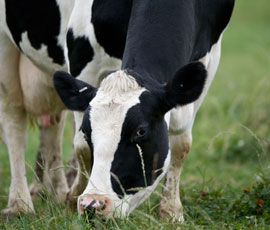Irish TB cattle numbers show further sharp drop

The level of bovine tuberculosis in cattle continues to decline sharply in Ireland, according to figures released by the Irish Department of Agriculture.
The latest statistics show so far this year 10,389 reactors have been found at testing. That compares with 14,078 reactors recorded for the first nine months of 2012 – a reduction of 3,489 or 29%.
The Irish Farmers’ Association welcomed the statistics, attributing the success to the Irish government’s tough TB eradication programme.
IFA animal health chairman John Waters said: “The ongoing improvement in the levels of TB in the national herd is down to the effectiveness of the Wildlife Control Programme.
“It is critical this programme continues to be implemented in all areas and, in particular, targeted at those areas where levels of TB remain higher than the national average. The role of other wildlife in the spread of TB in these counties must be taken into account by the Department of Agriculture.”
But Mr Waters expressed concern that the drop in herds currently under restriction had only fallen by 306 to 2,404.
“It is disappointing that the number of herds restricted is not lower in line with the reduced levels of TB.
“Herd restrictions impose enormous costs on farmers and limit their day-to-day farming activity. The department must identify ways of reducing the burden of TB restrictions on farm families by using the savings in the TB Eradication budget that have accrued due to the lower number of reactors, and by removing unnecessary prohibition on trade,” he added.
| The Irish TB eradication policy |
|---|
| Comprehensive programme of disease surveillance includes:
|
| Disease controls include:
|
| Wildlife control Where epidemiological investigation rules out other immediate causes as the source of TB infection and evidence of badger activity has been found on a holding, badgers may be captured under licence. Under these arrangements licences are granted to each divisional veterinary officer to capture and cull badgers. |
More on bovine TB and badger culling
